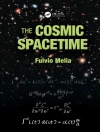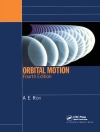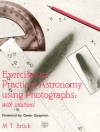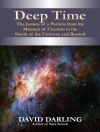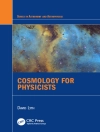In September 2011, the GRAIL mission launched two unmanned spacecraft to the Moon, which entered into lunar orbit on December 31, 2011 and January 1, 2012. They orbited the Moon until December 17, 2012, when they impacted the surface near the Moon’s north pole. This book contains three review articles co-authored by the GRAIL Science Team and Guest Scientists that describe the reasons for the GRAIL mission, the development of the necessary technology, and the design of the mission to acquire the most precise measurements of the lunar gravity field possible today. The book provides a detailed description of the GRAIL mission’s scientific objectives, the instrumentation and its required performance, the complex simulation of the measurement system for determining the gravity field, and the innovative education and public outreach of the mission directed toward middle-school students who could select areas of the Moon for imaging with the onboard Moon Kam camera system.
This volume is aimed at researchers and graduate students active in solar system science and planetology.
Originally published in Space Science Reviews journal, Vol. 178/1, 2013.
表中的内容
Gravity Recovery and Interior Laboratory (GRAIL): Mapping the Lunar Interior from Crust to Core.- The Scientific Measurement System of the Gravity Recovery and Interior Laboratory (GRAIL) Mission.- The Lunar Gravity Ranging System for the Gravity Recovery and Interior Laboratory (GRAIL) Mission.
关于作者
Dr. Maria Zuber has been involved in more than half a dozen NASA planetary missions aimed at mapping the Moon, Mars, Mercury, and several asteroids. The topographic map of Mars produced by the laser altimeter experiment she co-led on the Mars Global Surveyor spacecraft is the most accurate topography model for any planet, including Earth. Her research interests include theoretical modeling of geophysical processes; analysis of altimetry, gravity and tectonics to determine the structure and dynamics of the Earth and solid planets; and development and implementation of spacecraft laser and radio tracking experiments. She currently serves as principal investigator of the NASA Gravity Recovery and Interior Laboratory (GRAIL) mission that mapped the global gravity field of the Moon at higher resolution than Earth. At present, she also is involved in experiments on the NASA Mars Reconnaissance Orbiter, Lunar Reconnaissance Orbiter, MESSENGER mission to Mercury and Dawn mission to asteroids Vesta and Ceres. In addition to her research on the structure and evolution of the terrestrial planets, she participated in experiments that have recorded the longest one-way and two-way laser links. Professor Zuber has received numerous awards for her work and is a member of the US National Academy of Science.
Professor C. T. Russell is a member of the faculties of both the Institute of Geophysics and Planetary Physics and the Department of Earth and Space Sciences. He is acting System-wide Director of IGPP. He is the head of the Space Physics Center in IGPP, UCLA and the Director of the UCLA Branch of the California Space Grant Consortium. He is the principal investigator on the POLAR mission; a co-investigator on the magnetometer team on the Cassini mission to Saturn; the ROMAP investigation on the Rosetta mission to comet Churyumov-Gerasimenko; the IMPACT investigation on the STEREO mission to study solar and solar wind disturbances; the THEMIS mission to studysubstorms; and the magnetometer investigation on the Venus Express mission to study the solar wind interaction with Venus. He is the principal investigator of the Dawn mission to the asteroids Vesta and Ceres.


